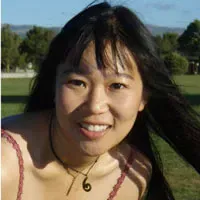Creative Cities

By Renee Liang
I don't know if it's just me waking up at last, but there seems to be more and more to do in Auckland these days.
With the Auckland Festival, Auckland Fringe, summer festivals, theatre shows and independent art events all beckoning, it's way impossible to see and do everything, even if you only stick to one genre.
How wonderful and how frustrating. Recession or no recession, it seems that the grand plan of our benign city elders is finally coming true and Auckland is no longer boring or notable only for its rugby players. So, the big question: have we finally matured into a Creative City?Hmmm.
Ok, so what the hell is a Creative City? Well, those who have written funding applications will be all too familiar with the use, if not the in-depth principle, of this term. (Hint: it's closely related to Diversity, Innovation and Community Involvement. ) But is "Creative Cities" just a buzz term, or is it actually useful? A quick google shows that there is a lot of talk internationally around this concept, and some serious investment by the likes of the British Council (more on that later) and our own Asia: NZ Foundation, even though both these organisations also have a focus on promoting business links and investment. Similarly our own Auckland City Council have put time and money into reports, which has then been translated into an Arts Agenda, which in turn determines funding.
So by now you should be sitting up and taking notice. For those serious about a career in the arts, it's well worth the time spent reading these reports and policies (they aren't as dry as you might think). But anyway, here's my take on Creative Cities: - It's what generates the "buzz" or intangible magic of a city like London or Sydney. - Research suggests it's not only about having a critical mass of creative types, but that these artists are actively working from within a community, to produce an energy and embracing sense of identity. - It's also about playing up to strengths and uniqueness. In our case, it's our blend of cultures - Pakeha, Maori, Pacific and Asian - that sets Auckland aside from other world cities. - As real estate agents know, where artists break new ground, others will follow. Skilful people are drawn to places which are interesting to live, eat and play in.
So despite the often low perceived worth of artists (not looking at any policy makers in particular), investment in the arts pays off over the long term. - A creative environment can lead to benefits in economy, health, education and so on - in short, it's the spark that sets everything else off. Anyway. Enough rant. Let's look at a nice homegrown example - the People In Your Neighbourhood project, which is a flagship event for the British Council this year. Earlier on TBI I interviewed Gareth Farry, who has the somewhat uninspiring title of Business Manager for the British Council (sorry Gareth) but whose actual job is far more interesting. The PIYN project is a personal one for him, having grown (literally) out of his lounge and into a huge project that crosses borders both physically and metaphorically. In doing so he has had the organisational and financial backing of the British Council, which according to its website is interested in "connect(ing) aspirational young New Zealanders with contemporary UK, across the spheres of arts, creative industries, science and education."
In other words, with sharing the creative energy between NZ and the UK. How do I know about PIYN? Simple. I was recruited by Gareth as one of the NZ artists at a Big Idea event, so I'm probably biased as to its worth. (It is really awesome, by the way!) But if you want to assess this project for yourself, I'd highly recommend downloading the free album or attending one of the concerts in Auckland (12th March) or Taranaki (14th March). Or just take note of the names and see how many of them 'make it' over the next few years.
As the second example of how creatives work with established organisations to create a more vibrant city, I have no shame in plugging my own Fringe event, Funky Oriental Beats (FOB for short). This project, like many, is a grassroots initiative of a group of independent artists, and yes, sometimes it's been a slog. However along the way FOB has had informal/formal/moral support from local governmental organizations such as The EDGE, which along with the Auckland Festival Trust is sponsoring the first ever Auckland Fringe (which we're all going to support, right?) In fact, FOB plus around 40 other groups have benefitted from the Fringe kickstart. Clearly in these tight financial times(pontification alert!), 'we' creatives are going to be asked more and more to justify our existence, and not just when funding deadlines fall due. I think it's our collective responsibility to assert ourselves and make sure we know the reasons why, and the channels how. Read previous TalkWrite blogs
Use the comment box below 26/02/09